 Jedediah Britton-Purdy in New Republic:
Jedediah Britton-Purdy in New Republic:
A Theory of Justice was both radical and conservative. Yes, it proposed a sweeping reconstruction of “the basic structure” of American life—Rawls’s term for the key institutions of public life, such as government and the economy. At the same time, it described the principles of reconstruction as ones that Americans already held. This strategy of squaring the circle might seem odd: How can a country be committed to principles it routinely and pervasively defies and ignores? Yet it’s also peculiarly American. The American political myth (meaning not a simple fiction but a kind of shared master-story) is “constitutional redemption,” the idea that moral truths are woven deep into the country’s character, imperfectly expressed in the Constitution and existing institutions, but awaiting realization in “a more perfect union.” This was how Frederick Douglass and Abraham Lincoln talked about freedom and equality in the 1860s, and how Martin Luther King and Lyndon Baines Johnson talked about the same values in the mid-1960s. Constitutional redemption was the defining ideal of Cold War liberal patriotism. Its strategies became, by subtle philosophical transformation, the strategy of A Theory of Justice: to say that Americans already are what they have never yet been—and that this ideal is also incipiently universal, if other peoples can make their way to it.
More here.

 Erica Chenoweth, Sirianne Dahlum, Sooyeon Kang, Zoe Marks, Christopher Wiley Shay and Tore Wig in The Washington Post:
Erica Chenoweth, Sirianne Dahlum, Sooyeon Kang, Zoe Marks, Christopher Wiley Shay and Tore Wig in The Washington Post: Adam Tooze in Social Europe:
Adam Tooze in Social Europe: Jay Caspian Kang in The New Yorker:
Jay Caspian Kang in The New Yorker: How did the most successful conservative party of the 20th century become the agent for a national humiliation? How could a political party so firmly tied to power, not least economic power, come to disregard its own particular view of the national interest? The Conservative-born Brexit crisis that has tormented the nation since 2016 has multiple causes, the most crucial and under-explored of which is economic. The great financial crisis of 2008 certainly had an impact on the referendum result: it led to economic stagnation, not least in productivity and wages, as well as disastrous cuts to many public services. Local authorities, responsible for social care, were hit especially hard, as were the working poor. But the really significant economic transformations behind the decision to leave the EU have deeper roots. Over the past 40 years the nature of capitalism in the UK has changed in ways that concepts such as “neoliberalism” and “post-industrialism” have failed to grasp. The relationship between capitalism and politics has also changed radically.
How did the most successful conservative party of the 20th century become the agent for a national humiliation? How could a political party so firmly tied to power, not least economic power, come to disregard its own particular view of the national interest? The Conservative-born Brexit crisis that has tormented the nation since 2016 has multiple causes, the most crucial and under-explored of which is economic. The great financial crisis of 2008 certainly had an impact on the referendum result: it led to economic stagnation, not least in productivity and wages, as well as disastrous cuts to many public services. Local authorities, responsible for social care, were hit especially hard, as were the working poor. But the really significant economic transformations behind the decision to leave the EU have deeper roots. Over the past 40 years the nature of capitalism in the UK has changed in ways that concepts such as “neoliberalism” and “post-industrialism” have failed to grasp. The relationship between capitalism and politics has also changed radically.
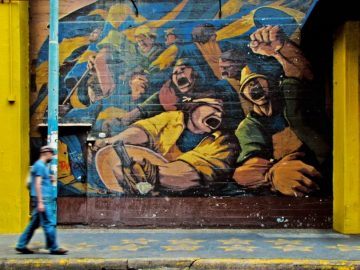 J. M. Coetzee (JMC): Balzac famously wrote that behind every great fortune lies a crime. One might similarly claim that behind every successful colonial venture lies a crime, a crime of dispossession. Just as in the dynastic novels of the nineteenth century the heirs of great fortunes are haunted by the crimes on which their fortunes were founded, a successful colony like Australia seems to be haunted by a history that will not go away. The question of what to say or do about dispossession of Indigenous Australians is as alive in the Australian imagination as it has ever been.
J. M. Coetzee (JMC): Balzac famously wrote that behind every great fortune lies a crime. One might similarly claim that behind every successful colonial venture lies a crime, a crime of dispossession. Just as in the dynastic novels of the nineteenth century the heirs of great fortunes are haunted by the crimes on which their fortunes were founded, a successful colony like Australia seems to be haunted by a history that will not go away. The question of what to say or do about dispossession of Indigenous Australians is as alive in the Australian imagination as it has ever been. Bowie was a famously insatiable reader. As a teenager in Bromley he was schooled in the Beats by his older brother Terry. Cocaine-crazed in 1970s America, he would stay up all night inhaling books about the occult from his 1,500-volume portable library. In 1998, somewhat more well adjusted, he wrote reviews for Barnes & Noble. Feeling from an early age formless and incomplete, he rebuilt himself from pieces of the things he loved: not just literature and music but cinema, art, people, places. While the similarly well-read Bob Dylan preferred to veil his sources, Bowie made an exhibition of them – literally so at his touring museum show David Bowie Is, where some of his favourite books dangled from the ceiling like mobiles. He was the star-as-fan and his fandom was promiscuous. When LCD Soundsystem’s
Bowie was a famously insatiable reader. As a teenager in Bromley he was schooled in the Beats by his older brother Terry. Cocaine-crazed in 1970s America, he would stay up all night inhaling books about the occult from his 1,500-volume portable library. In 1998, somewhat more well adjusted, he wrote reviews for Barnes & Noble. Feeling from an early age formless and incomplete, he rebuilt himself from pieces of the things he loved: not just literature and music but cinema, art, people, places. While the similarly well-read Bob Dylan preferred to veil his sources, Bowie made an exhibition of them – literally so at his touring museum show David Bowie Is, where some of his favourite books dangled from the ceiling like mobiles. He was the star-as-fan and his fandom was promiscuous. When LCD Soundsystem’s 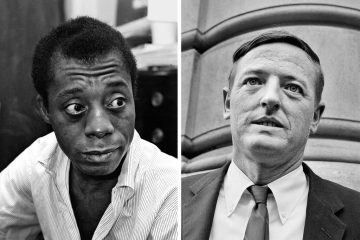 In 1965, the year of the Selma-to-Montgomery marches and the Watts riots, an ancillary skirmish played out across the Atlantic. James Baldwin, then at the height of his international reputation, faced off against William F. Buckley Jr., the “keeper of the tablets” of American conservatism, in the genteel confines of the Cambridge Union. The proposition before the house was: “The American dream is at the expense of the American Negro.” For Baldwin, who would roll his eyes more than once during the debate, the question indicated glaring ignorance. The American dream was a nightmare from which he was trying to wake. For Buckley, the American dream was a giant bootstrap that American blacks refused to employ. “We will fight … on the beaches and on the hills, and on mountains and on landing grounds,” he told the audience of students that evening, channeling Winston Churchill. Only Buckley invoked the imagery of plucky guerrilla resistance not against a Nazi invasion of the British Isles, but against Northern radicals bent on uprooting the Southern way of life.
In 1965, the year of the Selma-to-Montgomery marches and the Watts riots, an ancillary skirmish played out across the Atlantic. James Baldwin, then at the height of his international reputation, faced off against William F. Buckley Jr., the “keeper of the tablets” of American conservatism, in the genteel confines of the Cambridge Union. The proposition before the house was: “The American dream is at the expense of the American Negro.” For Baldwin, who would roll his eyes more than once during the debate, the question indicated glaring ignorance. The American dream was a nightmare from which he was trying to wake. For Buckley, the American dream was a giant bootstrap that American blacks refused to employ. “We will fight … on the beaches and on the hills, and on mountains and on landing grounds,” he told the audience of students that evening, channeling Winston Churchill. Only Buckley invoked the imagery of plucky guerrilla resistance not against a Nazi invasion of the British Isles, but against Northern radicals bent on uprooting the Southern way of life.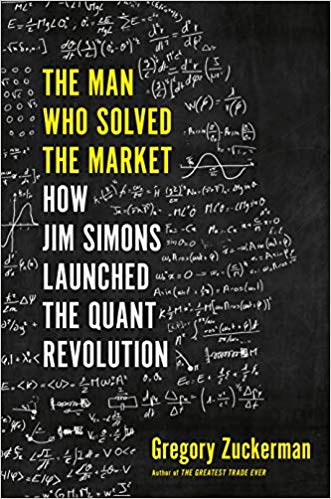 There’s an excellent new book out about Jim Simons and Renaissance Technologies,
There’s an excellent new book out about Jim Simons and Renaissance Technologies,  The elderly
The elderly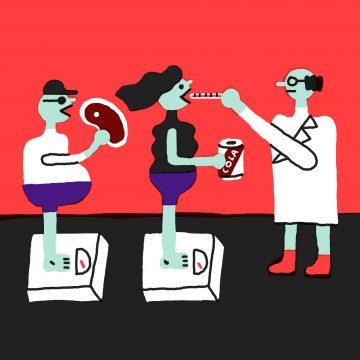 Most diet trials in the best journals fail even the most basic of quality control measures. That’s the finding of a study by us
Most diet trials in the best journals fail even the most basic of quality control measures. That’s the finding of a study by us 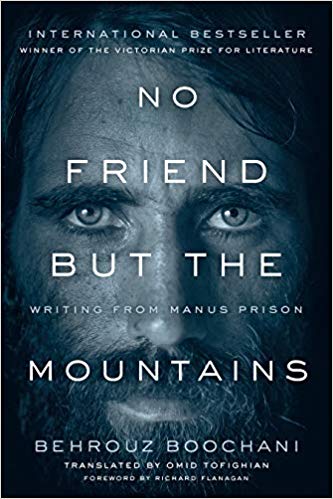 The experience of translating Behrouz’s book is itself rich with multiple narratives; some reaching back before our initial communication, even before the construction of Manus Prison. Over the last few years, especially after meeting Behrouz, I’ve come to realise how integral narratives are to living life well, and the translation process for this book has confirmed and expanded my insights and experiences with storytelling. This translator’s tale provides some insight into the many experiences and conversations that have shaped the book and characterise our shared vision of narrative and life.
The experience of translating Behrouz’s book is itself rich with multiple narratives; some reaching back before our initial communication, even before the construction of Manus Prison. Over the last few years, especially after meeting Behrouz, I’ve come to realise how integral narratives are to living life well, and the translation process for this book has confirmed and expanded my insights and experiences with storytelling. This translator’s tale provides some insight into the many experiences and conversations that have shaped the book and characterise our shared vision of narrative and life. There are no birth, baptism or early records enabling a reconstruction of Julia Pastrana’s formative years, but she was probably born in 1834 in the Sierra Madre region of Mexico. She suffered from two rare congenital disorders that meant her face and body were covered in dark hair and her gums were so overgrown it looked as if she had a second set of teeth.
There are no birth, baptism or early records enabling a reconstruction of Julia Pastrana’s formative years, but she was probably born in 1834 in the Sierra Madre region of Mexico. She suffered from two rare congenital disorders that meant her face and body were covered in dark hair and her gums were so overgrown it looked as if she had a second set of teeth. In 2009, Sagri’s use of the loop suggested specific referents very much at hand. In part, it seemed a commentary on the art world’s difficulty in accommodating performance. A convention of video art was transposed to a living, breathing performer, as if to mockingly anticipate the work’s reuptake as documentation in the white cube. At the same time, while it seemed to wryly allude to the postmillennial art world’s romance with the ’70s, and to stage a dark burlesque of labor conditions, the loop was a clear attempt to reckon with digital technology’s pervasive influence at that historical moment. This was the dawn of popularized streaming video: YouTube launched in 2005; Netflix and PornHub began streaming in 2007. Hence the foregrounding in Do Jaguar of the iPod as the device on which the audio component of the piece is stored; hence not only the loop but also the glitch, an accidental mini-loop or inadvertent fast-forward, as a choreographic riff on postindustrial labor and the erratic recursions of immaterial gig economics. Artists such as Ryan Trecartin and Lizzie Fitch were mining this same vein in video work, but Sagri was a key adapter of these concerns to live modes.
In 2009, Sagri’s use of the loop suggested specific referents very much at hand. In part, it seemed a commentary on the art world’s difficulty in accommodating performance. A convention of video art was transposed to a living, breathing performer, as if to mockingly anticipate the work’s reuptake as documentation in the white cube. At the same time, while it seemed to wryly allude to the postmillennial art world’s romance with the ’70s, and to stage a dark burlesque of labor conditions, the loop was a clear attempt to reckon with digital technology’s pervasive influence at that historical moment. This was the dawn of popularized streaming video: YouTube launched in 2005; Netflix and PornHub began streaming in 2007. Hence the foregrounding in Do Jaguar of the iPod as the device on which the audio component of the piece is stored; hence not only the loop but also the glitch, an accidental mini-loop or inadvertent fast-forward, as a choreographic riff on postindustrial labor and the erratic recursions of immaterial gig economics. Artists such as Ryan Trecartin and Lizzie Fitch were mining this same vein in video work, but Sagri was a key adapter of these concerns to live modes. Every age
Every age The central story of The Little Mermaid is, of course, 16-year-old Ariel’s identity crisis. She feels constrained by her patriarchal mer-society and senses she doesn’t belong. She yearns for another world, apart from her own, where she can be free from the limits of her rigid culture and conservative family. Her body is under the water, but her heart and mind are on land with people. She leads a double life. She is, essentially, “in the closet” (as symbolized by her “cavern”—or closet—of human artifacts, where the character-building song “Part of Your World” takes place). When Ariel ventures to tell her friends and family about her secret identity, they chastise her and tell her she must conform. She must meet her father’s expectations, sing on demand, perform for the public and give up all hopes of a different life. Her father, King Triton, even has her followed by a court official. In her misery, Ariel flees to the sea witch Ursula, the only strong female in the entire film and thus Ariel’s only female role model. At this point, the movie becomes truly subversive cinema.
The central story of The Little Mermaid is, of course, 16-year-old Ariel’s identity crisis. She feels constrained by her patriarchal mer-society and senses she doesn’t belong. She yearns for another world, apart from her own, where she can be free from the limits of her rigid culture and conservative family. Her body is under the water, but her heart and mind are on land with people. She leads a double life. She is, essentially, “in the closet” (as symbolized by her “cavern”—or closet—of human artifacts, where the character-building song “Part of Your World” takes place). When Ariel ventures to tell her friends and family about her secret identity, they chastise her and tell her she must conform. She must meet her father’s expectations, sing on demand, perform for the public and give up all hopes of a different life. Her father, King Triton, even has her followed by a court official. In her misery, Ariel flees to the sea witch Ursula, the only strong female in the entire film and thus Ariel’s only female role model. At this point, the movie becomes truly subversive cinema. Socrates famously railed against the evils of writing. The sage warned that it would “introduce forgetfulness into the soul of those who learn it: they will not practice using their memory because they will put their trust in writing.” He got a few things wrong. For one, people nurture Socrates’ memory because of all of the books written about him. But he also was off the mark in his musings about a forgetfulness of the soul. If anything, it appears that just the opposite holds: a study of hundreds of illiterate people living at the northern end of an island considered to be a world media capital roundly contradicts the father of Western philosophy. Evaluations of the elderly in the environs of Manhattan’s Washington Heights (the neighborhood immortalized by a
Socrates famously railed against the evils of writing. The sage warned that it would “introduce forgetfulness into the soul of those who learn it: they will not practice using their memory because they will put their trust in writing.” He got a few things wrong. For one, people nurture Socrates’ memory because of all of the books written about him. But he also was off the mark in his musings about a forgetfulness of the soul. If anything, it appears that just the opposite holds: a study of hundreds of illiterate people living at the northern end of an island considered to be a world media capital roundly contradicts the father of Western philosophy. Evaluations of the elderly in the environs of Manhattan’s Washington Heights (the neighborhood immortalized by a